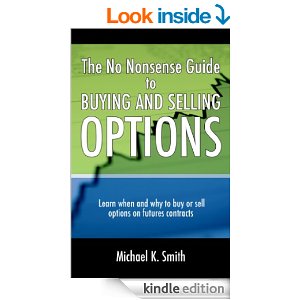Cocoa Futures and Options
Market Trading

Learn the most effective strategies for buying and selling options
on futures contracts. Also learn producer and consumer hedging
strategies.
*The information contained within this webpage comes from sources
believed to be reliable. No guarantees are being made to the
content's accuracy or completeness.
The History of Cocoa and Cocoa Futures Trading
Cocoa is the common name for a powder derived
from the fruit seeds of the cacao tree. Roughly 2/3 of cocoa bean production is
used to make chocolate and 1/3 to make cocoa powder. Cocoa was originally
combined with spices and served as a luxury drink in the Aztec empire. The cocoa was brought back to Spain
and was called
"the food of the gods". For nearly a century, chocolate
(usually made from cocoa, sugar, cinnamon and
vanilla) became an exclusive drink of the Spanish
Royal Court, until it gradually achieved a wider
popularity in cocoa houses of major European cities
when it became less expensive.
ICE
Cocoa Futures and Options Quick Facts
-
10 metric ton contract size
-
$1 move equals $10
-
Trades March, May, July, Sept., Dec.
-
Cocoa futures symbol (CC)
Here is a brochure from the ICE for cocoa futures and
options.
ICE cocoa brochure
In
1925 the world's first cocoa bean future was started
at the New York Cocoa Exchange. In 1986 the first
cocoa options began trading. Cocoa future trading is
now a very active future trading contract. Cocoa
options on the cocoa futures contracts have enjoyed
much higher volume and consequently much greater
liquidity recently.
During the September 11 terrorist attacks the
Coffee, Sugar and Cocoa Exchange (CSCE)
was destroyed but within days the cocoa futures and
cocoa options markets were once again trading. This
is a testament to the strength and viability of the
soft futures markets. The CSCE has since merged to become part of the New York Board
of Trade (NYBOT) who merged with The Intercontinental Exchange (ICE).
Are you a cocoa
hedger? If so,
click here to learn more.
Cocoa Options on Futures Contracts Explained
A cocoa call option gives the purchaser the right
but not the obligation to purchase the underlying futures contract
for a specific time period and a specific price (strike price).
Let's say that you wanted to purchase a July cocoa $2,000 call
option and pay a premium of $1,200.
This means that you bought the right but not the obligation to buy
10 metric tons of July cocoa for $2,000 per ton. Of course, very few
options are bought for the purpose of taking delivery but that is
one potential outcome. Chances are that you either bought the cocoa
option to hedge your price risk in the physical cocoa market (you
may be a producer like a cocoa farmer or an end user like a
chocolate candy company) or you
are speculating that cocoa prices will go higher in an attempt to
make a profit.
A cocoa put option gives the purchaser the right
but not the obligation to sell the underlying futures contract for a
specific time period and a specific price. Let's say that you wanted
to buy a July cocoa $1,500 put option and pay a premium of $1,100.
This means that you have the right but not the obligation to sell 10
metric tons of July cocoa at $1,500 per ton.
What is the delta factor?
The delta factor of an option represents the estimated percentage of
change an option will receive based on the movements in the
underlying futures contract.
Let's assume the July cocoa $2,000 call option above has a 30% delta
factor. This means that if the underlying futures contract were to
rally by $1,000, then the call option would accrue by approximately
$300 or 30% of $1,000 in the cocoa futures contract.
What is theta?
Options are wasting assets which means that they lose value as time
passes. The theta of an option is the measure of time decay.
Let's assume that you bought a July cocoa $2,000 call option with 60
days left until expiration. Let's also assume that the cocoa futures
prices have moved very little over the last month and are exactly
the same price 30 days later. Your option will have lost 30 days
worth of time and therefore will be worth less today that it was
when it had 60 days left until expiration.
What is
vega?
Vega is a measure of the implied volatility of
an option contract as it relates to its underlying futures contract.
For instance, if the underlying futures contract is extremely
volatile then the implied volatility of the options of that futures
contract will be affected.
In a high implied volatility environment option
premiums tend to expand. Conversely, in a low implied volatility
environment the option premiums tend to decrease.
*Contract information changes from time to time. Please
click here
to see the most recent contract specifications and
click here
for the most recent trading hours.
ICE
Contract Specifications for Cocoa Future Contracts
Trading Unit
10
metric tons (22,046 pounds)
Trading
Hours
4:00 a.m. - 2 p.m. (NY time) (Verify with exchange)
Price
Quotation
Dollars per metric ton
Delivery
Months
March, May, July, September, December
Futures Ticker
Symbol
CC
**Click
Here Now! for actual
cocoa futures and options, quotes, prices, expirations, charts .....
To
visit other soft commodities go to
coffee futures ,cotton futures,
orange juice futures and
sugar futures.

SITE MAP
|
